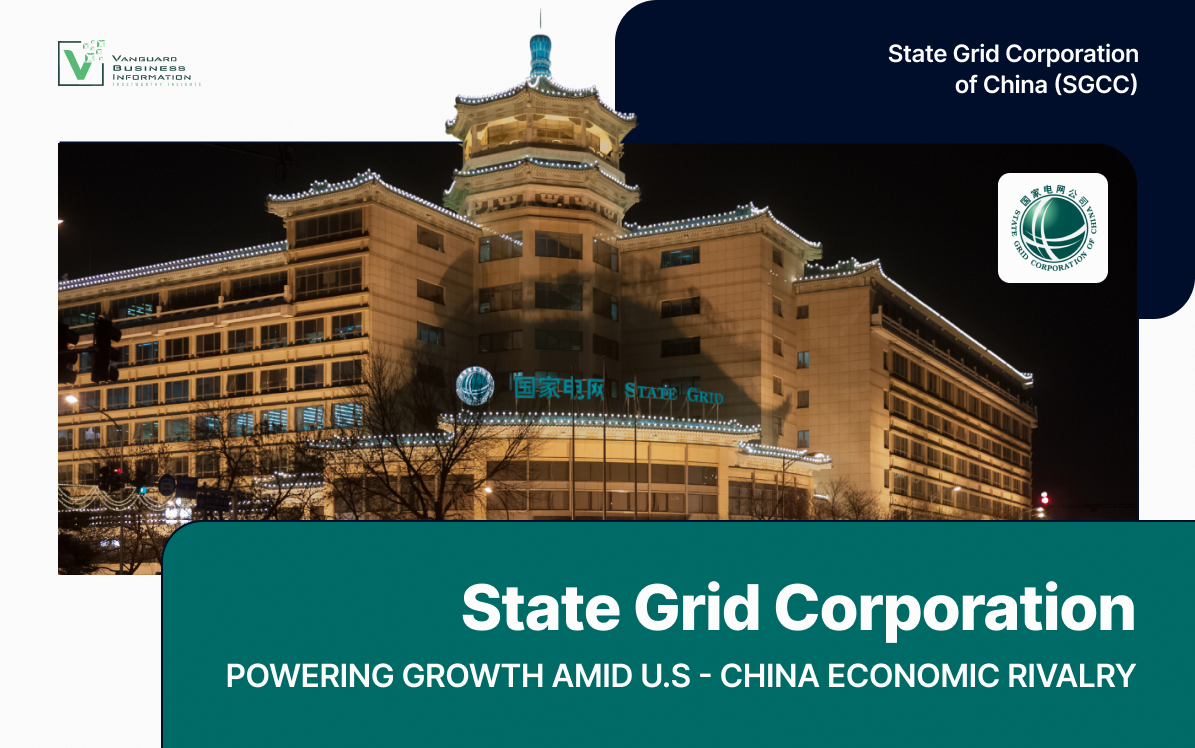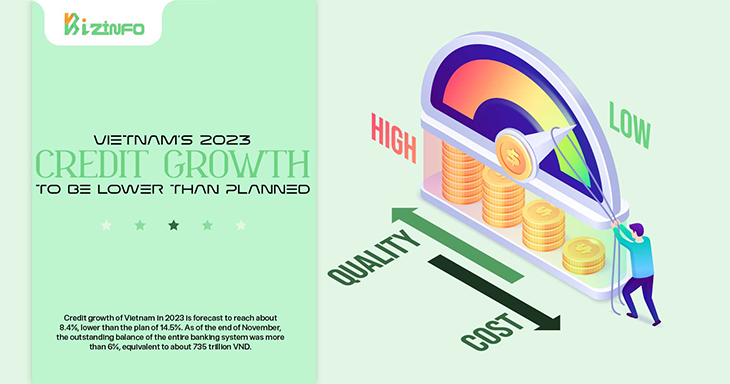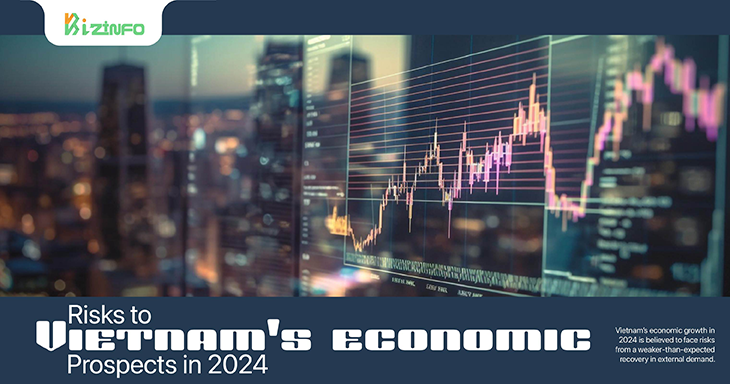Published Jan 2025
State Grid Corporation of China: Powering Growth Amid U.S.-China Economic Rivalry
With revenue surpassing $530 billion in 2023, State Grid is the world’s second-largest company by revenue, trailing only Walmart. This state-owned enterprise highlights China's state-directed economic model, balancing its role in national development with a push for global influence.

The State Grid Corporation of China (State Grid) is a cornerstone of China's energy infrastructure and a key player in the global energy sector. With revenue surpassing $530 billion in 2023, State Grid is the world’s second-largest company by revenue, trailing only Walmart. This state-owned enterprise highlights China's state-directed economic model, balancing its role in national development with a push for global influence. Its scale, technological achievements, and geopolitical reach place it at the heart of the ongoing economic competition between the United States and China.
A Global Powerhouse in Energy
Unparalleled Scale
State Grid operates the largest and most extensive power grid in the world, serving over 1.1 billion people—approximately 88% of China’s population. Covering vast and diverse terrains, its infrastructure includes:
- More than 1.2 million kilometers of transmission lines.
- Over 24,000 substations, ensuring efficient energy distribution across urban and rural areas.
- Integration of 350 GW of renewable energy capacity into its grid as part of China’s push for cleaner energy.
Revenue and Workforce
With annual revenue of $530 billion in 2023, State Grid ranks as the largest utility company globally. Its workforce includes over 1.5 million employees, making it one of the largest employers in the world. These employees manage the intricate operations of a grid that handles more electricity than any other system globally.
Investment in Renewable Energy
As part of China’s 2060 carbon neutrality goal, State Grid has invested heavily in:
- Ultra-High Voltage (UHV) transmission technology, which efficiently transports power across vast distances with minimal energy loss.
- Smart grid technologies, ensuring seamless integration of renewable energy and reducing grid instability caused by fluctuations in wind and solar generation.
In 2023 alone, State Grid allocated over $70 billion toward upgrading its grid infrastructure, including renewable energy integration and advanced storage solutions.
A Key Player in Global Energy Markets
State Grid’s international reach mirrors China’s broader geopolitical ambitions. The company has invested in energy infrastructure across Europe, Latin America, Asia, and Africa, often targeting strategic regions to align with China's Belt and Road Initiative. Key projects include:
- Ownership stakes in power grids in Portugal, Brazil, Italy, and the Philippines.
- Development of large-scale renewable energy projects in developing nations, particularly in Africa and Southeast Asia.
- A growing presence in global markets, with total overseas investments exceeding $25 billion.
Innovation and Technological Leadership
State Grid has established itself as a leader in energy innovation, particularly in UHV transmission technology. This groundbreaking system allows the transport of electricity over thousands of kilometers with minimal losses, providing a cost-effective solution to connect remote renewable energy projects with urban demand centers.
Smart Grids and Energy Storage
The company is also pioneering smart grid technologies, which use advanced monitoring and analytics to optimize energy use. Coupled with its investments in large-scale battery storage, State Grid ensures the stability of its grid while advancing China's renewable energy goals.
Balancing Challenges and Opportunities
While State Grid is a behemoth in the energy world, it faces significant challenges:
- Energy Transition: China remains heavily reliant on coal, which still accounts for over 55% of its energy mix. State Grid is tasked with decarbonizing the energy sector while meeting growing energy demands.
- Regulated Prices: The Chinese government caps electricity prices, limiting State Grid’s profitability despite its massive revenues.
- Geopolitical Pushback: International investments have faced resistance in some countries due to concerns about China’s growing influence over critical infrastructure.
Comparison with Walmart: Two Models of Economic Power
State Grid’s success represents China’s state-directed growth model, where national priorities drive corporate objectives. In contrast, Walmart epitomizes the market-driven innovation of the U.S., thriving on operational efficiency and customer satisfaction. While Walmart’s revenues exceeded $600 billion in 2023, its model focuses on private enterprise and profit maximization.
- Global Scale:
- Walmart operates in over 20 countries, with more than 10,000 retail stores worldwide.
- State Grid serves 1.1 billion people and manages the largest power grid globally.
- Sustainability Efforts:
- Walmart aims for 100% renewable energy in its operations by 2035.
- State Grid has integrated over 350 GW of renewable capacity and is leading China’s transition to clean energy.
- Geopolitical Influence:
- Walmart’s global reach strengthens U.S. economic influence but is primarily a commercial entity.
- State Grid, as a state-owned enterprise, directly supports China’s geopolitical strategy through its investments in energy infrastructure abroad.
State Grid: A Strategic Arm of China
State Grid is more than just a utility provider—it is a strategic instrument of China’s government. By prioritizing energy security, technological advancement, and global influence, State Grid underscores the strengths of China's economic system while highlighting the trade-offs of its state-owned model.
Policy Implications
- Efficiency vs. National Goals: While State Grid ensures alignment with China’s long-term objectives, inefficiencies and monopolistic tendencies are challenges inherent to state ownership.
- Global Coordination: State Grid’s role in the Belt and Road Initiative positions it as a tool for China’s economic diplomacy, extending its influence to critical regions worldwide.
The State Grid Corporation of China exemplifies the scale and ambition of China’s state-led economic model. As a vital component of China’s infrastructure and a leader in global energy markets, State Grid demonstrates the advantages of centralized planning in achieving long-term goals like renewable energy integration and infrastructure development.
However, challenges such as decarbonization, geopolitical scrutiny, and profitability constraints underscore the complexity of balancing commercial success with national priorities. In the broader context of U.S.-China economic rivalry, State Grid stands as a powerful counterpoint to private-sector giants like Walmart, reflecting the strategic advantages and limitations of state-directed growth.
As the world shifts toward a sustainable and interconnected future, State Grid’s continued evolution will shape not only China’s energy landscape but also global energy markets. Its role as a driver of innovation and a tool of geopolitical influence ensures that State Grid will remain at the forefront of the energy sector for years to come.


